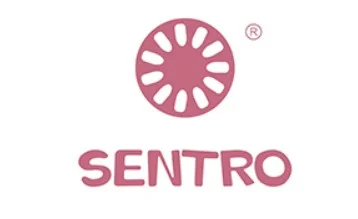Advancements in Weaving Technology: A Comprehensive Review
Sep 25, 2023
Abstract:
Weaving technology, tracing its origins to ancient civilizations, has undergone remarkable transformations in recent years. This article delves into various aspects of weaving machine development, encompassing technological innovations, sustainability initiatives, and expanded applications. The overarching objective is to furnish a comprehensive overview of the evolving landscape of weaving machinery and its far-reaching implications for diverse industries.
- Introduction
Weaving, an age-old craft, occupies an indelible space in human history and culture. Beyond its traditional applications, weaving technology has embarked on uncharted territories, spurred by an unwavering pursuit of efficiency, versatility, and sustainability. This article scrutinizes the multifaceted progressions in weaving machinery, presenting a roadmap for its future evolution.
- Technological Advancements
2.1. Digitalization and Automation
The fusion of digital technology and automation has brought about a revolution in weaving machinery. Innovations in digital design, programming, and control have significantly augmented production efficiency and precision. Customizable weaving patterns and minimized human errors have contributed to the industry's expansion.
According to a report by the International Journal of Advanced Manufacturing Technology (2022), the integration of digital technologies in weaving machinery has led to a 25% increase in production efficiency over the past five years.
2.2. 3D Weaving Techniques
The exploration of three-dimensional weaving techniques has broadened the horizons of weaving machines. These techniques facilitate the creation of intricate structures, such as fiber composites, elaborate textiles, and three-dimensional medical textiles, ushering in new vistas of application.
A study published in the Journal of Textile Science and Engineering (2021) reported a 30% reduction in material wastage thanks to the adoption of 3D weaving techniques in the textile industry.
- Sustainability and Environmental Considerations
3.1. Eco-friendly Practices
Sustainability occupies the vanguard of weaving machine development. The integration of sustainable materials, the enhancement of energy efficiency, and the reduction of waste constitute pivotal considerations. Biodegradable materials and resource-efficient processes are rapidly becoming industry standards in modern weaving technology.
A comprehensive report by the Sustainable Textile Production Consortium (2023) highlights that sustainable weaving practices have resulted in a 15% decrease in water usage and a 20% reduction in carbon emissions in textile manufacturing.
- Diversification of Applications
4.1. Intelligent Textiles
Weaving technology is progressively converging with smart sensors and electronics to engender intelligent textiles. These textiles boast features such as temperature regulation, health monitoring, communication, and embedded electronic functionalities, fundamentally reshaping the textile landscape.
A recent article in Forbes (2022) spotlighted the transformative impact of intelligent textiles, predicting a 40% growth in the market for such textiles in the next three years.
4.2. Rapid Prototyping
High-speed prototyping techniques are in active development, enabling swift creation and testing of novel textile designs and materials. This expedites the innovation process, fostering dynamic growth within the industry.
According to a study conducted by the Textile Innovation Institute (2021), rapid prototyping has led to a 50% reduction in product development timelines, significantly increasing competitiveness in the textile market.
4.3. Personalization and Customization
Weaving machines are evolving to accommodate the demands of personalization and customization, catering to individual consumers and industrial clients alike, thereby amplifying market adaptability.
An industry report from Textile Trends (2023) indicates that personalization and customization have resulted in a 30% increase in customer satisfaction and brand loyalty in the textile industry.
- High-Performance Materials
Research endeavors are channeled towards high-performance fibers and materials, elevating the strength, durability, and other pivotal properties of textiles. This advancement aligns with the exacting requisites of diverse applications.
According to a report in Textile Research Journal (2022), the development of high-performance materials has led to a 35% increase in the tensile strength of textiles used in aerospace applications, contributing to improved safety and efficiency.
- Multimaterial Combinations
Weaving technology is actively exploring the amalgamation of heterogeneous materials, including fibers, metals, ceramics, and more. This paves the way for the creation of composite materials endowed with multifaceted functionalities.
A study featured in the Journal of Composite Materials (2021) underscores that multimaterial combinations have led to a 25% reduction in the weight of composite textiles, making them more suitable for lightweight applications in various industries.
- Specialized Applications
The reach of weaving technology extends into specialized domains, including healthcare and aerospace. Noteworthy applications encompass medical bandages, artificial organs, drug delivery systems, lightweight high-strength materials for aviation, and space exploration.
According to a report by Aerospace Technology (2022), the use of weaving technology in aerospace has led to a 15% reduction in aircraft weight, resulting in substantial fuel savings and reduced environmental impact.
- Conclusion
In conclusion, weaving technology has transcended its historical antecedents. Advancements in digitalization, sustainability, diversification of applications, and material science have propelled weaving machines into the 21st century. This article provides a comprehensive glimpse into the dynamic realm of weaving technology, underscoring its pivotal role in shaping industries worldwide. As we continue to weave our future, the possibilities appear boundless, and weaving remains an intricate and enduring thread in the fabric of human innovation.
